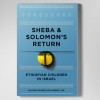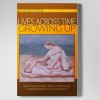Chung, my Tai Chi instructor — after I finally get the basic twenty-four movements correctly — takes my palm and firmly presses her forefinger into its live center. Here is the place, my yin from which the Chi must exit; my yang sits in my finger tips. Chi is the energy, she explains, in the Universe that I can take in with the breathing. Last year, when I was visiting in San Francisco and rejoined my old Tai Chi group in Golden Gate park, in the basin between the Art Museum and the Science museum, she would take me aside afterwards, this diminutive Korean woman in her seventies, to instruct me in the basic moves. We went to the eastern edge of the Art museum; as she later explained, the pine trees give off more Chi. These should enter through my finger tips, the soles of my feet.
She “rather leads” the mostly Chinese group (a new member is asked if they speak Mandarin or Cantonese; as I am visiting from Israel, one woman asks if I speak Assyrian.) “Rather leads,” as she prefers not to. She does her movements often with eyes closed and slowly, as if immersed in some glycerin-like fluid. Her fingers are poised like a ballerina, the forefinger a bit aloft from the others, the middle finger closer to her yin. So, I am surprised at the end of our hour of movement when this close-eyed dancer turns to me with concern that I am not breathing properly. She hears my non-breaths behind her. I, relieved that I got the basic moves correct, had not noticed my breathing. She explained that the breath should come in through the nose, fill the chest and abdomen to just below the navel. Then I should feel it travel backwards to my spine, upwards and lock the inhale at the top of my neck. Then exhale. Certain movements for inhale; others for exhale. As it is a martial art, the attacking moves are on exhale.
Today, she dismisses the very new two Chinese men to ask Judy (a newbie) and I to go through the basic twenty-four. She is pleased that I get them and breathe properly, then instructs me with the yin and yang. Judy is studying acupuncture.
Chung’s husband, Ikjin, is my Tai Kwan Do instructor. (I have become a family enterprise.) She had told me of him last summer and early this summer, I asked her if I could take lessons with him. He had been brought to the U.S. in the mid-60’s to instruct Army personnel in the Presidio — then still a military base — on martial arts. She would speak with him. He asks to interview me. We sit in a meticulous living room, shoes off, hand-tatted eyelet cell linens on the armrests of couch and chairs. He knows that I am a professor. He knows from Chung about my Tai Chi efforts. He tells me that he is retired , but still has one class of former military students who come each Monday from Napa, a two-hour drive. He decides that he will take me on as a private student at his old rate — $25. He asks me to “interview” him. As I gather my thoughts in surprise, he approaches and asks me to grasp his hand: it is brick-like. He asks me to come from behind and give a bear hug; he slips away like quicksilver between fingertips. He tells how after his interview at the Army base before a table of officers, one, a fellow topping six feet and over 220 pounds, rises from the table and approaches Ikjin. Tells him that he will put him into a Chinese neck lock intended to kill. Ikjin gets the fellow to his knees in a moment and Ikjin gets the job. Not permitted to live on the base, he takes the bus to the Presidio each morning, waits at the gate and a jeep escorts him to teach his classes.
Whereas, Chung says, Tai Chi helps one take in Chi from the universe, Tai Kwan Do is to use the Chi against others. It has a brutal forcefullness, a focus. When first taught in 1950’s South Korea, Ikjin explains, Tai Kwan Do is taught to kill on first blow. But, he will teach me how to defend myself and get away quickly.
A very different seeps into this basement room. The body is kept low with bent knees but always always upright torso. As best possible, as often as one can, keep the body sideways to the opponent — a smaller target. Feet apart, often one behind, just as one keeps one hand lower than the other so that one is always prepared for a follow-up blow. One hand may deflect or defend, but the other is ready to hit for eyes, jugular. One foot carries much weight so that the other can strike the ribs (liver or spleen), or head. I am put through six variations of upper body maneuvers, reminded: legs deeply bent, body low, upper torso upright. Then come kicks — forward (metatarsal only, toes retracted), roundhouse (using the torso to spiral the force, snapping tthe upper foot at least as high as the ribs), side kick (lower two-thirds of the foot and outer edge). Whatever the strike, put a snap and torsion into it. He demonstrates how Muhammed Ali surprised his opponents with a terminal torsion to his blows to the head: the final twist breaks blood vessels around the eyes. Of the fist, middle knuckle leads.
He demonstrates at me, stopping centimeters — perhaps millimeters — away; I feel the force of compressed air against my face. To learn defensive maneuvers — deflections with the fist (also with torsion, with a snap) — he asks me to prevent his touching my shoulder; I cannot as he is too quick: like snatching a fly with chopsticks.
While Ikjin takes pleasure in my progress, Chung is irritated that I am not remembering my Tai Chi. I reappear today. It is my redemption as she watches my twenty-four, hears my breathing in the Chi and instructs me on the Yin and Yang of my hands and feet. She finishes. If I plant my feet with the Yang firmly rooted (she points to a nearby ginko’s roots to demonstrate), I will be stable. I root myself as well as I can.
copyright N. Szajnberg, 2015




I really enjoyed reading this. Thank you! What interesting people. Had a good laugh over the Assyrian language question.
Keren